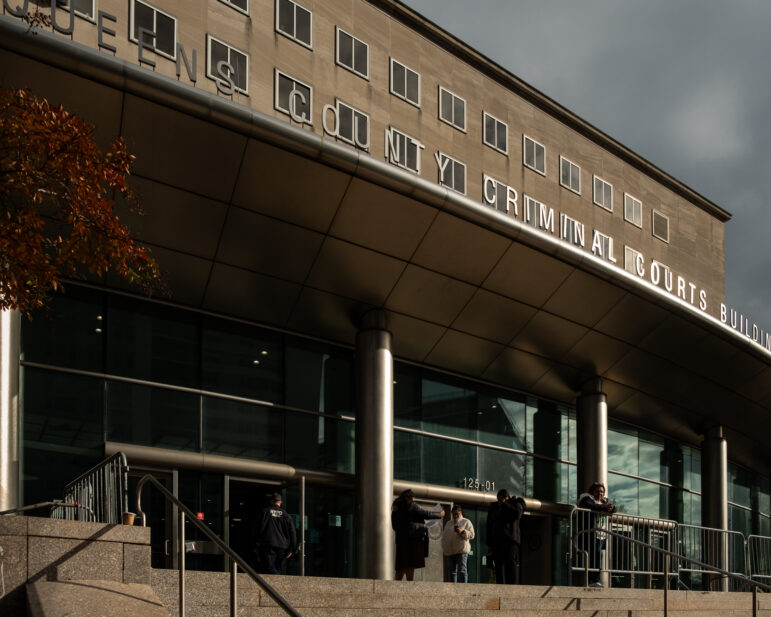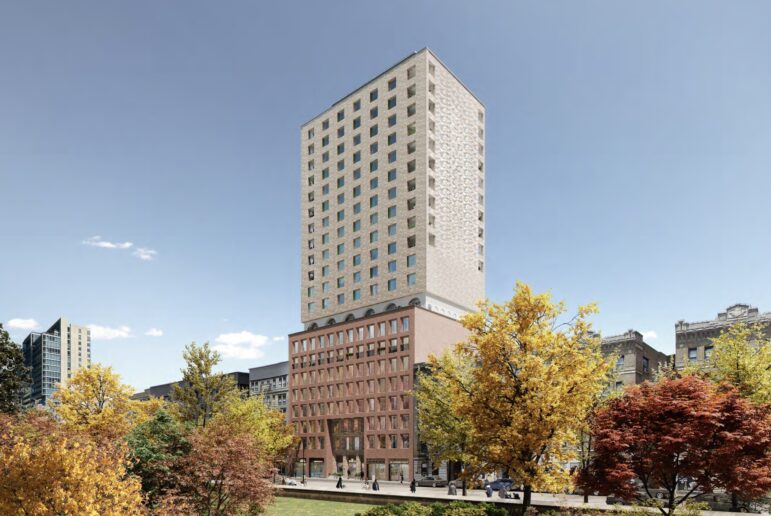
Chris Hamby
The issue of how to preserve industrial space amid the ambition to create more housing is a big topic in Gowanus, one of the neighborhoods slated for a rezoning.
Deputy Mayor Alicia Glen announced at a conference on Friday that the de Blasio administration will seek a way to create a zoning code that requires manufacturing uses among a mix of other uses like residential and commercial.
“The next big thing we’re going to be working on is really thinking through what true mixed-use looks like in the 21st century in New York City. We don’t want to just allow these uses to coexist, we want to require these uses to coexist,” said Glen at a zoning conference hosted by City Councilmember David Greenfield at the Brooklyn Law School.
Industrial advocates have long criticized the city’s so-called mixed-use districts as failing to actually protect manufacturing. While the mixed use district in theory allows a blend of uses, manufacturing businesses are often priced out by residential and commercial tenants that can pay higher rents. Councilman Brad Lander and others have been pushing the administration to consider reforming the city’s zoning code to not only allow, but require a mix of
uses, and the administration has already begun experimenting with ways to incentivize a specified blend.
“There’s a lot of discussion about how manufacturing itself has changed, the way in which noxious uses are no longer as prevalent as they were in manufacturing and making, and why these two things can coexist in a particular district. We think not only can they coexist in a particular district. We think they should exist in a district. We think they should exist in individual buildings,” Glen said. She added that the city would use both zoning tools and investments in manufacturing facilities on city-owned real estate and in manufacturing zones “to make sure that we are not letting the residential market sweep across New York City.”
A few industrial advocates at the conference expressed surprise at the announcement—or doubtfulness that it could be done.
“It’s hard to do,” said Brian Coleman, CEO of the Greenpoint Manufacturing and Design Center, noting the complexities of requiring manufacturing and apartments in one place. “We’re a little skeptical.”
As City Limits reported in October, crafting a mandatory mixed-use policy will be a challenge, requiring forethought about what exact ratio of uses to require, how to enforce a mix, and what exact kinds of businesses could coexist with apartments.
And there’s still disagreement about whether and when it would be preferable to rezone a manufacturing district to a mandatory mixed-use one, which might create space for advanced manufacturing while forcing out heavier, more noxious industrial uses like parking lots.
That issue is a hot topic in Gowanus, and was also a source of tension during one panel at the zoning conference, with participants expressing differing levels of excitement for new, advanced forms of manufacturing and more traditional manufacturing.
Toby Moskovits, CEO of Heritage Equity Partners and the developer of a mixed-use project in Greenpoint, said that her company helped move the original tenant there—an industrial equipment rental and storage yard— to a site in Maspeth, Queens. She said Maspeth, where rents are cheaper and there is more highway access, was a more suitable location than Greenpoint for this traditional business. Yet Coleman said having traditional businesses forced to outlying parts of the city would make it difficult for them to operate and for workers to get to their jobs.
“Sending them to Maspeth is like sending them to Alcatraz,” he said after the panel.
These questions aside, industrial advocates are curious to see how the administration comes up with a requirement for manufacturing in mixed use zones.
Armando Chapelliquen of the Association for Neighborhood and Housing Development (ANHD) noted that the administration has yet to follow through with another commitment they’ve made to manufacturers: placing limitations on hotels and self-storage facilities in Industrial Business Zones.








One thought on “De Blasio Admin. Eyes New Zoning Tool to Pair Housing and Industry”
Can’t think of a worse mix than Manufacturing + Residential. Besides, real manufacturing is dead in NYC. Even small niche manufacturers give up after a few years and head out to NJ or to the southern states. NYC’s taxes, rents, labor costs and regulations drive them out.